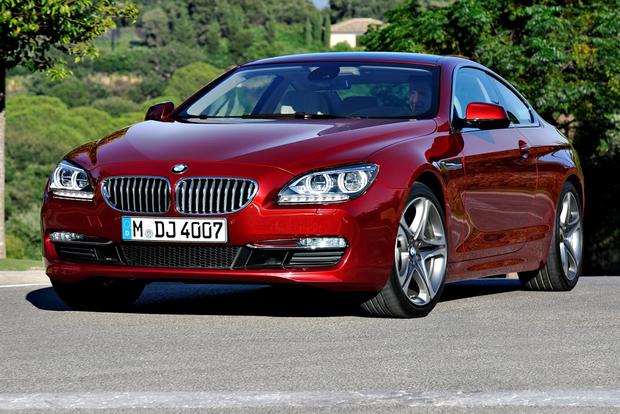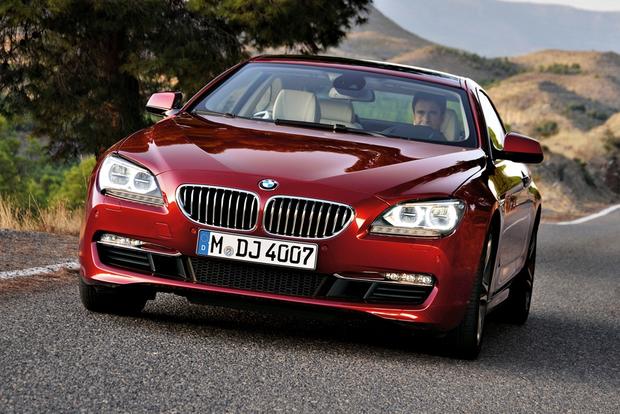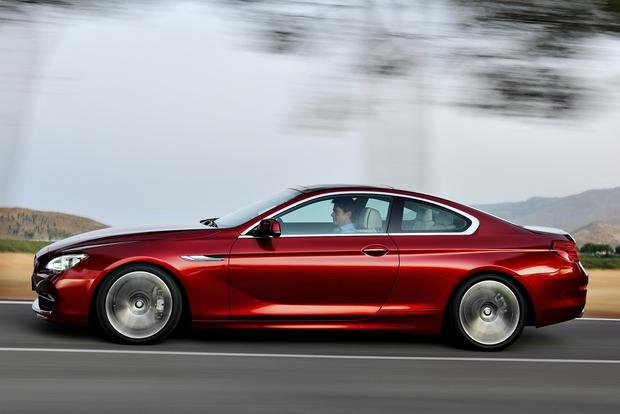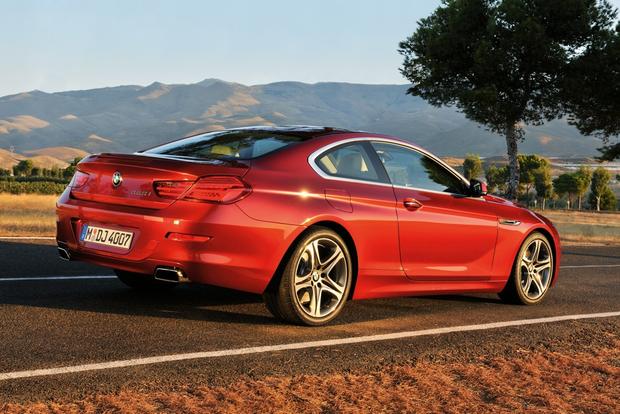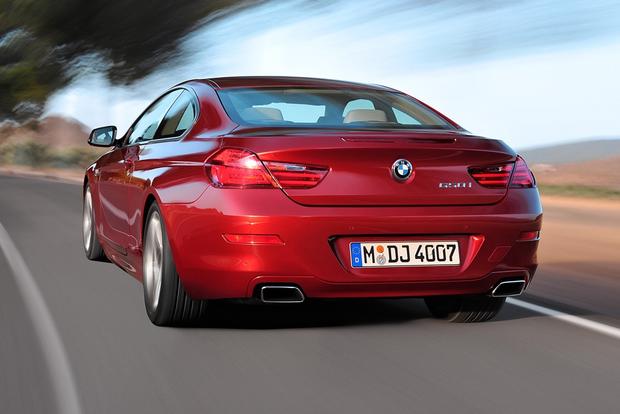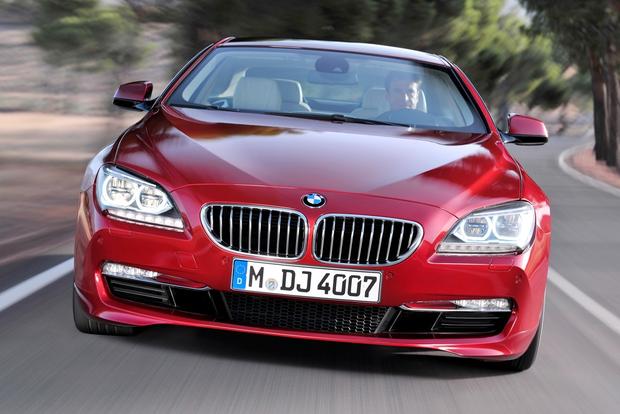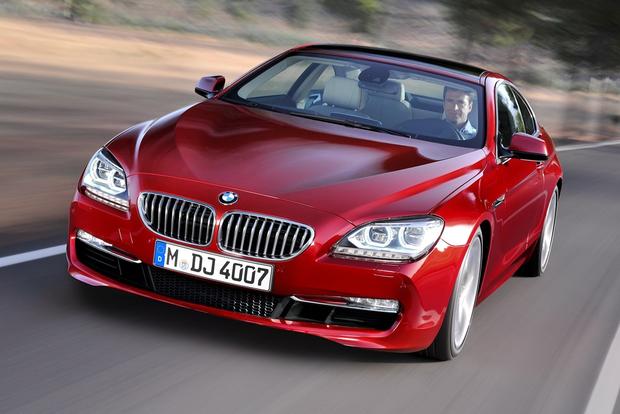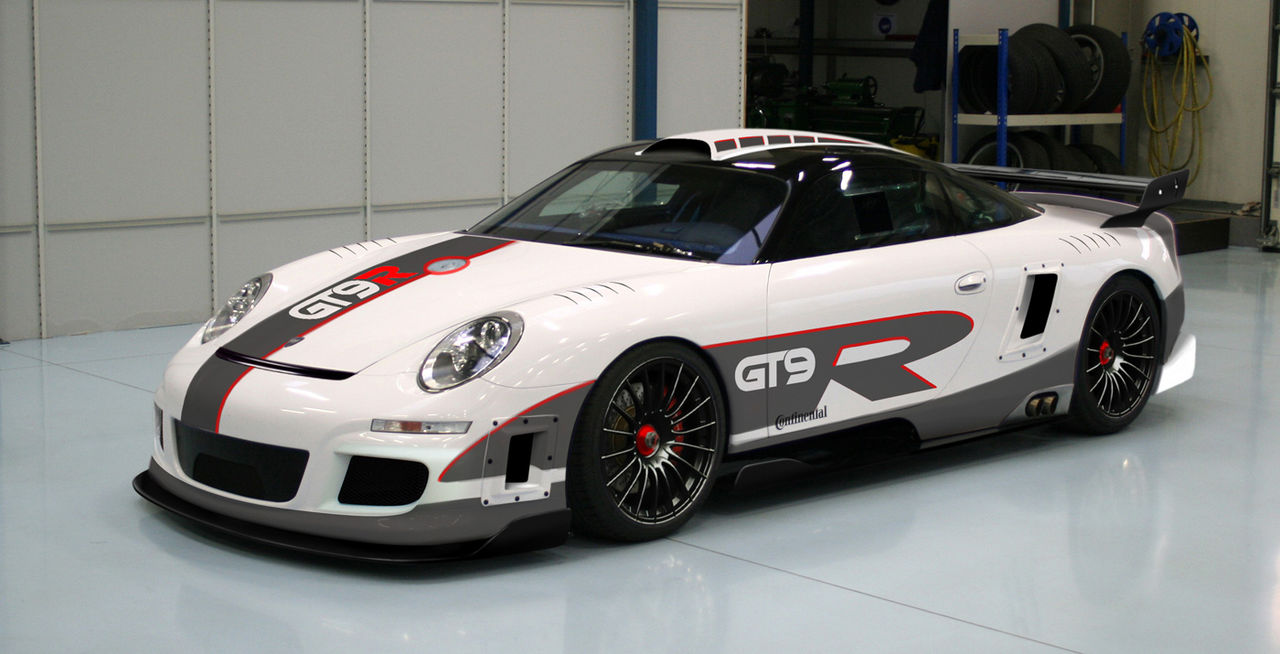What's New:
Entering its second year of production, the 2013 BMW 6 Series gets power and torque bumps for both the inline-6 and the V8. Also, all 6 Series models now come with an auto start/stop function, and the 650i loses its manual-transmission option. Finally, the 650 range's EPA fuel economy estimates have somehow increased a few ticks.
Introduction
The way things used to be, BMW was the sporty brand, and Mercedes stood for traditional luxury. But the 2013BMW 6 Series coupe and convertible show just how outdated those stereotypes have become. Emphasizing comfort and technology rather than the traditional "ultimate driving machine" ethos, the 2013 6 Series announces BMW as a serious player in the exclusive league of personal luxury cars.
Notably, this isn't BMW's first time around this particular block. The 1990s saw the rise and fall of the 8 Series, a sleek grand-touring coupe with an available V12 engine. Like the new 6 Series, the 8 Series was an excellent car that drew criticism for being too heavy and soft by BMW standards. Unfortunately, it was launched during a recession and never sold well, a fate that BMW obviously hopes the latest 6 Series will avoid.
We like its chances. Boasting a pair of awesome turbocharged engines, superb interior craftsmanship and epic high-speed composure, the 6 Series hits all the right notes for drivers who want that king- or queen-of-the-road character. In fact, there's even more speed on tap for 2013, particularly with the 650i's V8, which improves from 400 horsepower to a truly formidable 445. And while sporty handling isn't really part of the 6 Series formula anymore, this is still a massively capable car when you give it the spurs; just make sure the corners aren't too tight to accommodate the car's considerable size.
Overall, the 6 Series seems quite comfortable in its newly conservative role, providing all of the luxury and power that shoppers in this segment expect. BMWs are a different kind of driving machine these days, and judging by the 2013 6 Series, that's potentially a pretty good thing.
Comfort & Utility
The 2013 6 Series is offered as a coupe or soft-top convertible in two trim levels: 6-cylinder 640i and 8-cylinder 650i.
The 640i comes standard with a turbocharged inline-6 engine, 18-inch alloy wheels, adaptive xenon headlamps, fog lights, a sport-tuned suspension with adaptive dampers, front and rear parking sensors, a tilting glass roof panel, keyless entry with push-button ignition, auto stop/start, leather upholstery, 10-way power front seats with lumbar support and driver memory, a power tilt/telescopic steering wheel, dual-zone automatic climate control, iPod/USB and Bluetooth connectivity, a 9-speaker audio system and the hard-drive-based iDrive infotainment system with a 10.2-inch widescreen display, digital music storage, a navigation system and a rearview camera.
The 650i adds a twin-turbocharged V8 engine, an available manual transmission, 19-inch alloy wheels, 20-way Multi-contour power front seats, and Nappa leather upholstery. Some of the 650i's extra features are available on the 640i as options.
Notable add-ons include 20-inch wheels, adaptive cruise control, side- and top-view cameras and a 16-speaker Bang & Olufsen audio system.
Although the 6 Series borrows heavily from the 7 Series under the skin, its cabin is unique, and the first thing we noticed in our interior evaluation was the lowness of the front seats. They're not hard to get into, but there's a definite coupe flavor here. The standard 10-way power front seats are more than pleasant, but the 20-way Multi-Contour seats are so versatile and supportive that they're almost a must-buy, if you ask us.
The 6 Series' gauges use BMW's familiar white-on-black numerals that switch to orange-on-black at night. Interior materials are exceptionally nice, and the sporty dashboard?exclusive to the 6 Series?swoops snugly toward the driver. Our only real quibble concerns the steering wheel, which seems a bit large for coupe duty.
Well, make that two quibbles: the 6 Series' back seat is pretty much useless unless the folks in front have short inseams. Even then, headroom is severely limited unless you're in the convertible and the top's down. Speaking of which, we can't complain about the vinyl roof's rapid power operation; we'd just note that soft tops are inherently vulnerable to break-ins and harsh weather in ways that retractable hardtops simply aren't.
As for cargo space, the coupe boasts a reasonable 13 cu-ft, while the convertible's got 11 cu-ft with the top up and a couple fewer with it folded.
Technology
The 6 Series comes "loaded," as they say, and the technological centerpiece is the beautiful 10.2-inch iDrive system. More than just a pretty face, iDrive has improved dramatically from its controversial early years, now featuring a vastly better menu structure and numerous physical buttons next to the controller knob for direct access to common pathways. Furthermore, iDrive is now hard-drive-based, which gives you higher processing speeds and the fringe benefit of digital music storage. It's one of our favorite infotainment systems, particularly because the control knob falls readily to hand, whereas touch-screen systems require that you lean forward to execute commands.
Performance & Fuel Economy
The rear-wheel-drive 640i features a turbocharged inline-6 rated at 315 hp and 330 lb-ft of torque. Acceleration is strong yet civilized, and fuel economy is a rather amazing 23 mpg city and 33 mpg highway (20/30 mpg for the convertible).
The rear-drive 650i features a twin-turbocharged V8 with 445 hp, 480 lb-ft of torque, and acceleration that's so quick, it makes us question the point of the M6. This engine is simply spectacular. Miraculously, it's also more fuel-efficient this year, boasting EPA ratings of 17/25 mpg versus last year's 15/23 mpg.
The 650 range includes optional "xDrive" all-wheel drive for both the coupe and convertible. Yep, you can actually buy a 445-hp BMW convertible with all-wheel drive. Fuel economy only drops a smidge to 16/24 mpg.
All 6 Series models come with a nearly faultless 8-speed automatic transmission that enthusiastically matches revs on downshifts. A manual transmission was offered on the 650i last year, but that's now a thing of the past.
Safety
The 2013 6 Series comes with stability control, 4-wheel antilock disc brakes, active front head restraints, and four airbags (front and front-side).
Neither the government nor the independent Insurance Institute for Highway Safety has crash-tested the 6 Series.
Driving Impressions
The 6 Series is more athletic in corners than the already-capable 7 Series on which it's based, but it's too large and heavy for "ultimate" driving. The 6 Series' comfort zone is on the highway, where it's just impossible to get this car flustered. Think serene and planted at all speeds.
We especially enjoy driving the 650i with its seemingly invincible twin-turbo V8. You might read elsewhere that the 640i's inline-6 is more than enough, but we disagree. Once you've experienced the 650i's intoxicating thrust, you'll move mountains in order to add that engine to your personal fleet.
